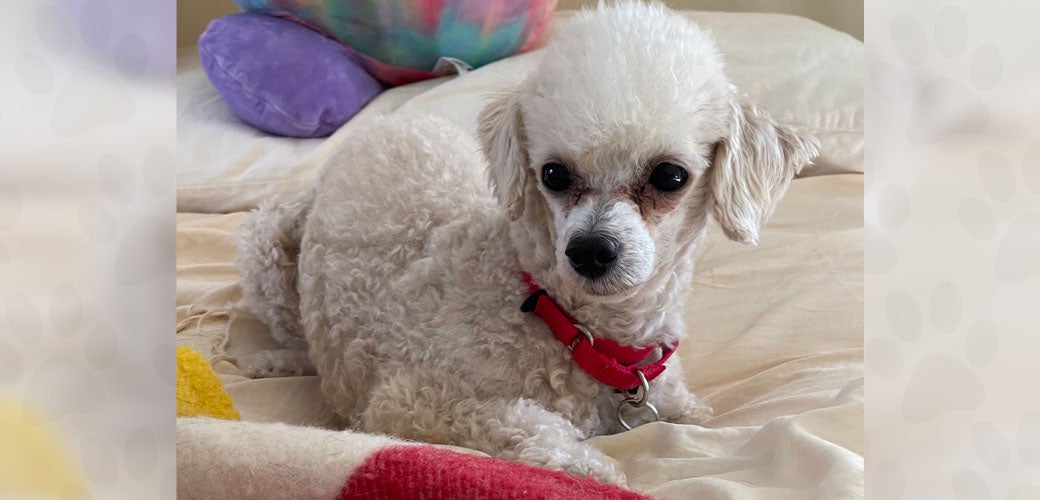A Long Road Ahead for a Former Puppy Mill Dog


My newly adopted doggie, Minnie, is a Toy Poodle who spent the first four years of her life in a filthy cage, covered in fleas, ear mites, and matted fur full of her own feces. She was forced to have litter after litter.
I fell in love with her the first time I saw her picture in a Facebook group for dog foster parents who work with my local rescue. I have fostered several pups and enjoy seeing the pictures of all the other rescue dogs settling in at their foster homes. Minnie, pictured in that post with her daughter, Baby, looked terrified. She had been rescued from a puppy mill in Florida and taken into rescue there. Somehow, I’m not sure how, they ended up here in Virginia.
I knew I was meant to be Minnie’s mom and that she was meant to be my little girl. I spoke with her foster mom, who told me Minnie had a long road of rehabilitation ahead of her. That didn’t sway me. I adopted her a couple of weeks later and brought her home.
Sweet Minnie is doing amazing, but it will indeed be a long road, and it will take a village. I’ve already relied on her foster mom, our wonderful vet, an amazing dog walker who was recommended for special-needs dogs, an excellent groomer, and an animal behaviorist. Minnie came to me with diarrhea due to a heavy load of hookworms, as well as in desperate need of dental treatment. She has no understanding of what a house is, and therefore no understanding that potty happens outside of it. When I take her outside on a leash she freezes and shakes. We are taking baby steps and learning more and more every day—both of us.
She’s not totally convinced yet that everything will be okay. She follows me around, curling up and relaxing just out of reach in whatever room I’m in. If she is lying down, she will tolerate my approach and a few pets. If I reach toward her while she is standing, she backs quickly away. The last couple of days she has run to the door with joy when I arrived home from work, doing zoomies around the room, and rushing up to lick my hand, fast as lightning, then quickly running off again.
I’m helping her as much as possible, but the real progress has been made thanks to my first dog, Lucky, a small mixed-breed with a calm disposition and a lot of patience. Minnie follows her around, imitating her every move. It is adorable, but it is also tremendously important—Minnie is learning how to be a dog. And Lucky is better at teaching that than I am.
We love our little Minnie beyond measure, and she has already come leaps and bounds. But I am not sure things will ever be completely easy for her. I’m not sure she will ever cuddle, be fully house-trained, or ready to attend the training classes my other dog has enjoyed. But I can tell that she knows she is safe. I can see her experience moments of joy. She has started using the pee pads the behaviorist reluctantly suggested. She sleeps all night, very peacefully, on a dog bed on the floor right next to me. And the few pets I get in here and there mean the world to me.
I love my precious girl. But I hate the torture she suffered in that puppy mill. I am hoping Minnie and I will find a way to advocate on behalf of the dogs who are still stuck in miserable conditions.
Commercial dog breeders strive to maximize profits and produce as many puppies as possible; little to no effort is made to socialize the animals or provide veterinary care. Dogs like Minnie are forced to live in tiny, filthy cages and are bred at every opportunity, even if they are sick, injured or have poor genetic traits that could be passed on to their puppies.
Help stop puppy mills from profiting off cruelty and stand up for puppy mill victims like Minnie. Join the ASPCA Advocacy Brigade today!
Source: Read Full Article